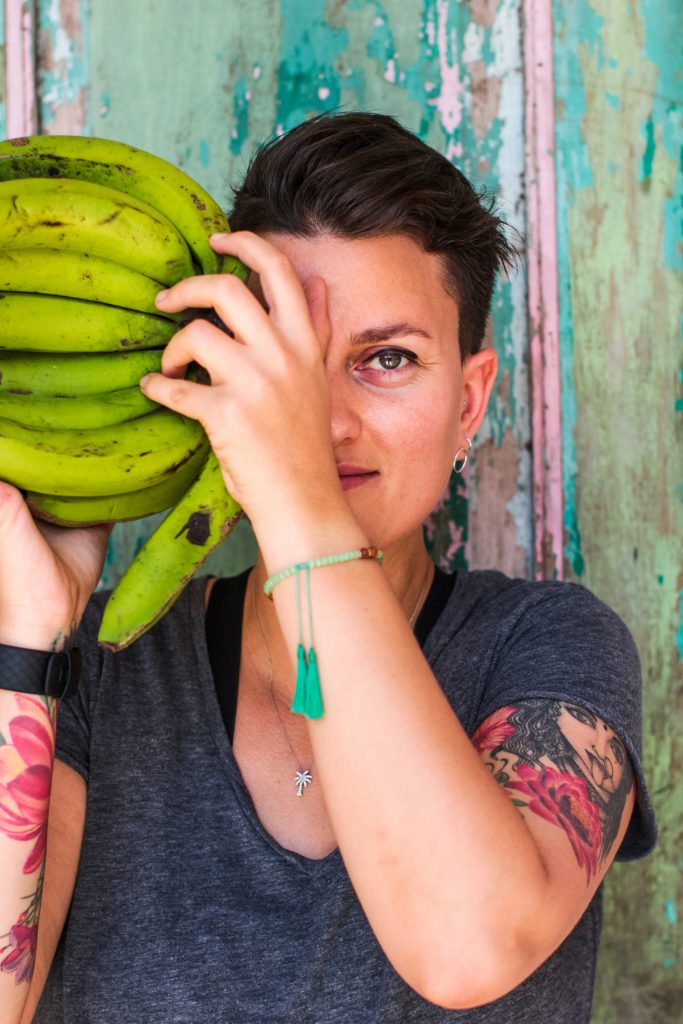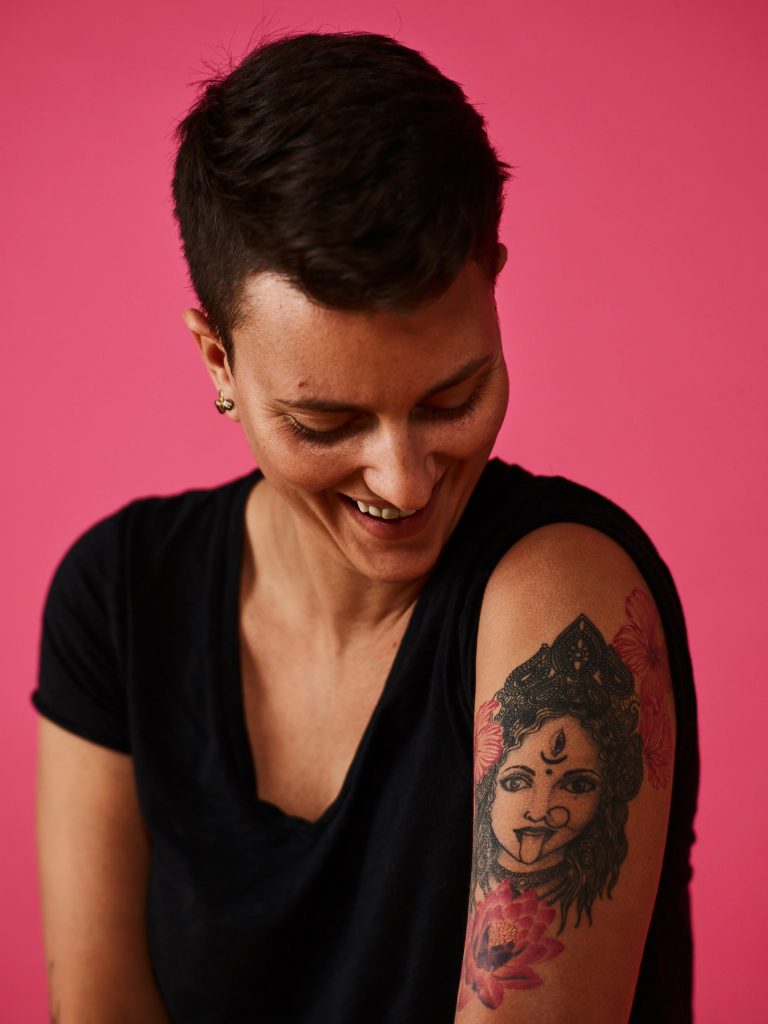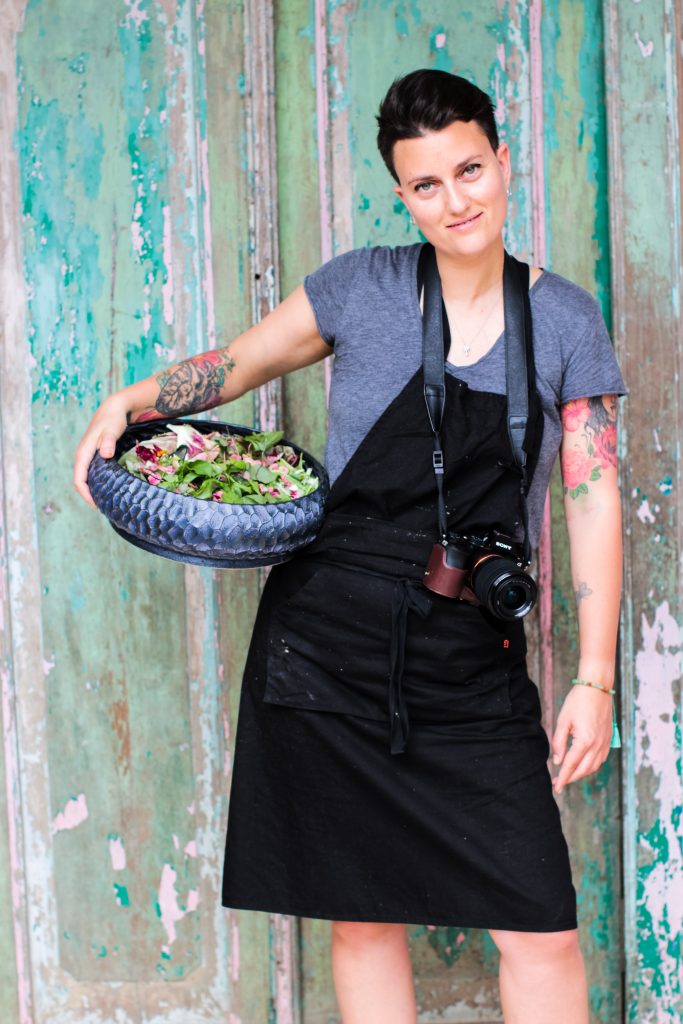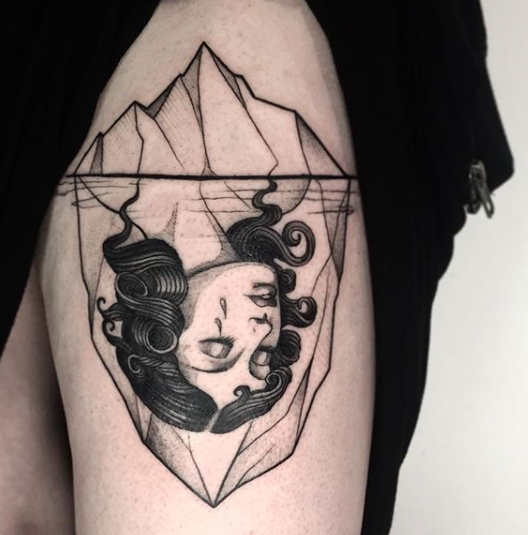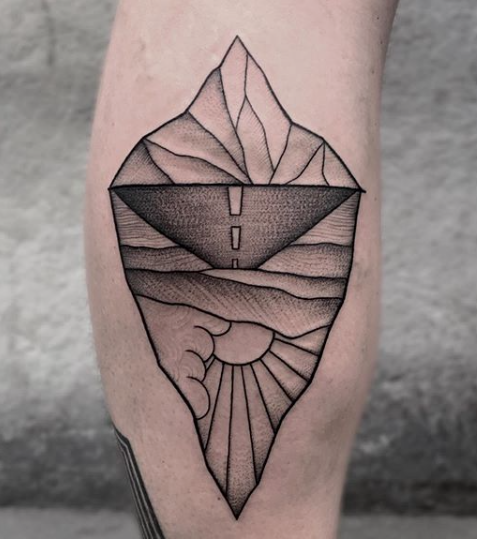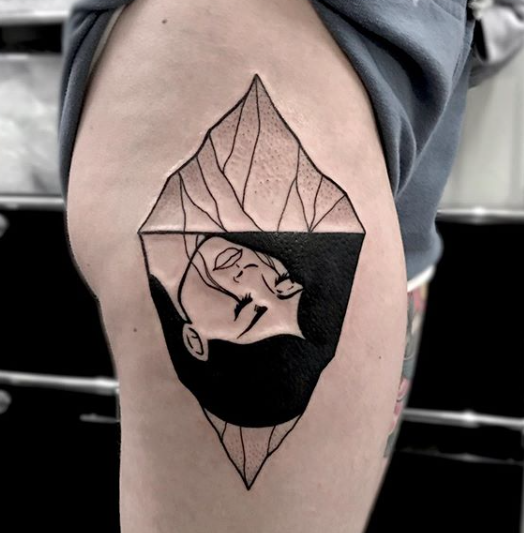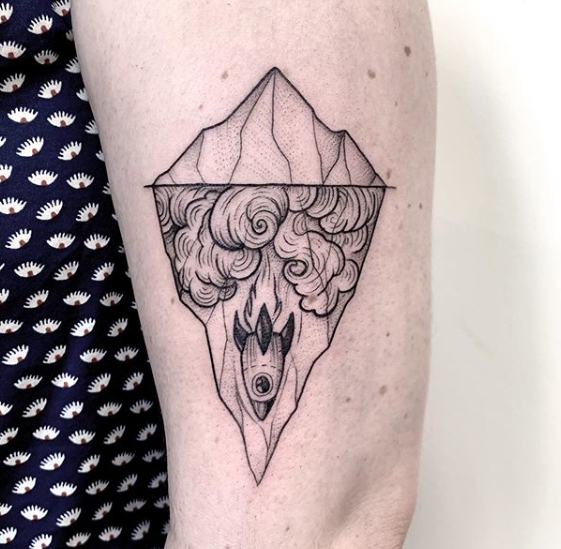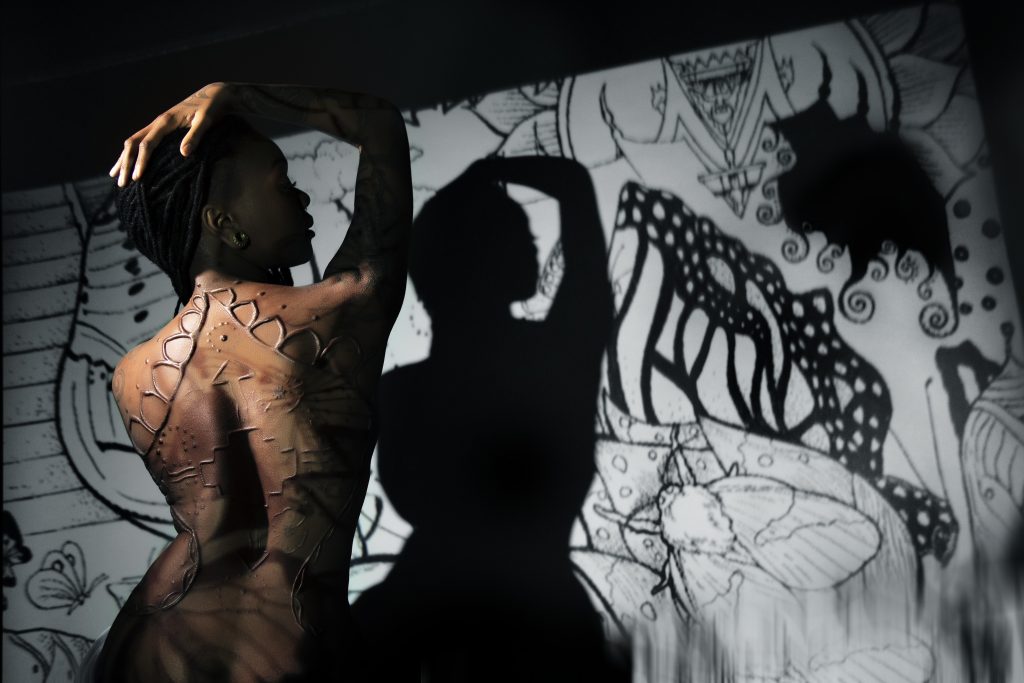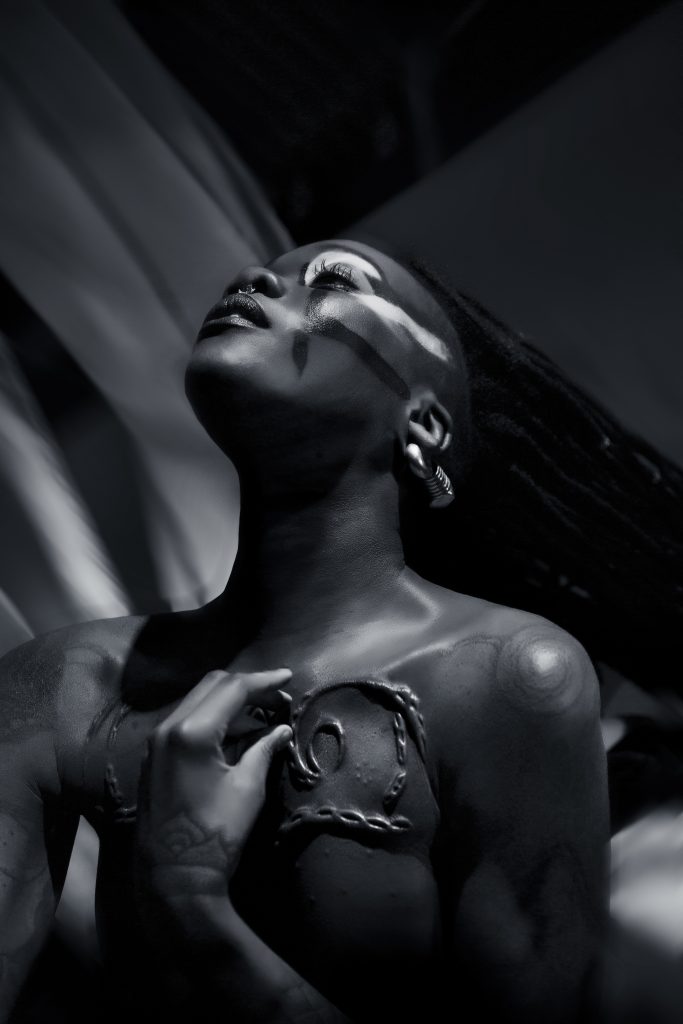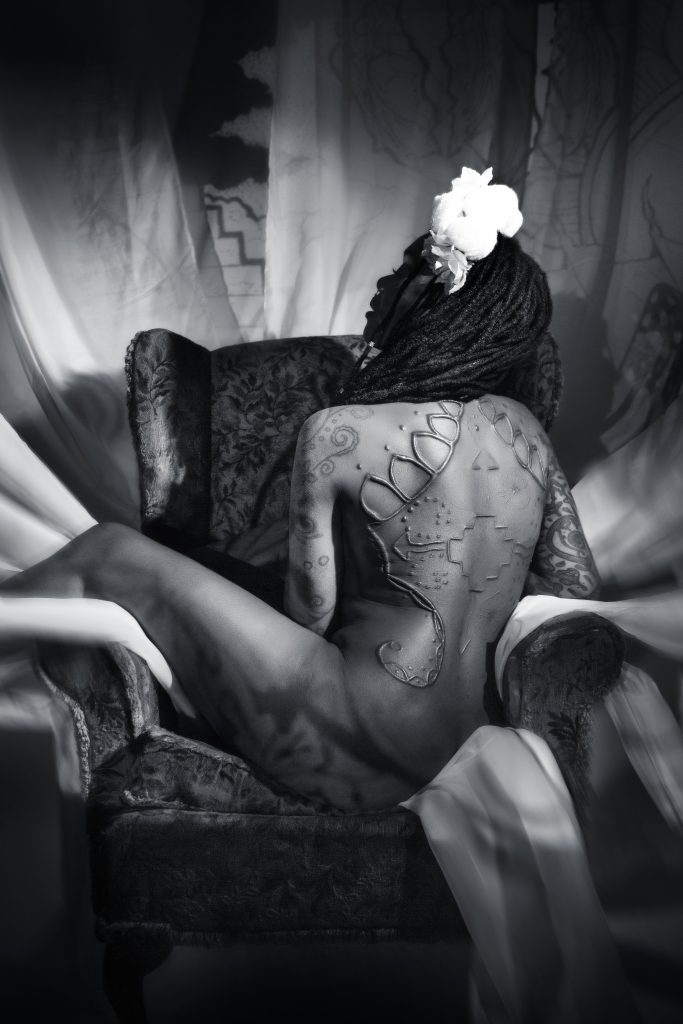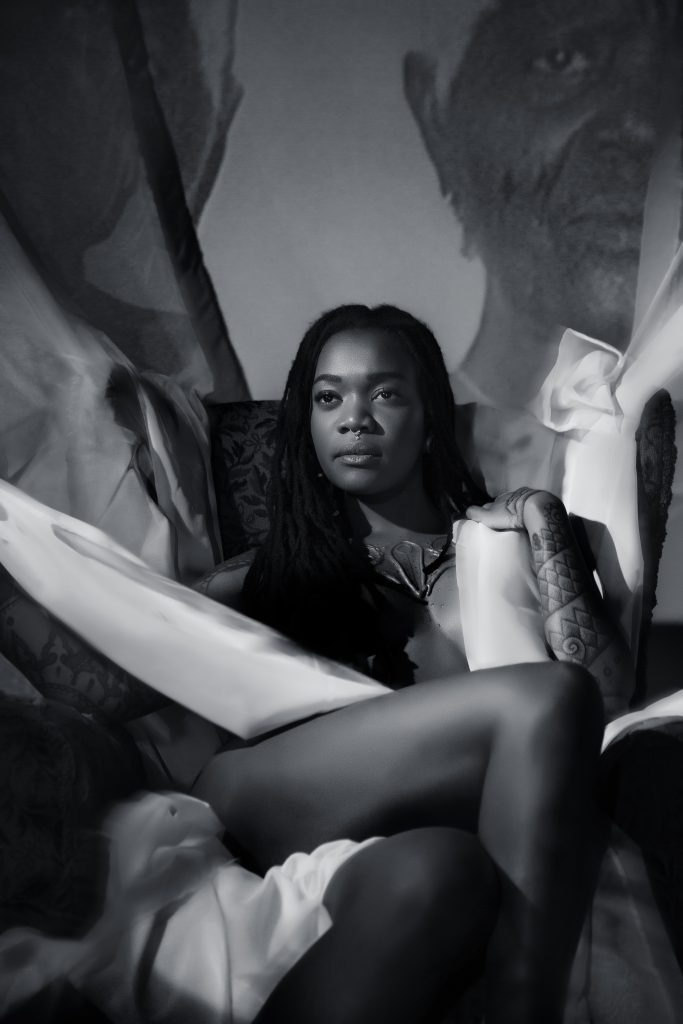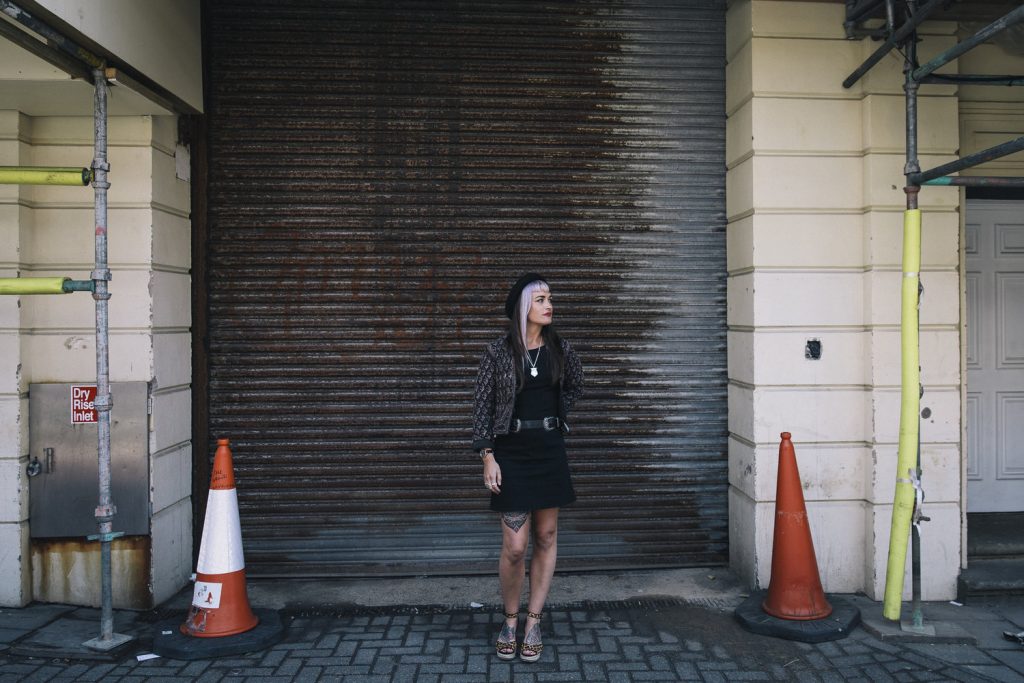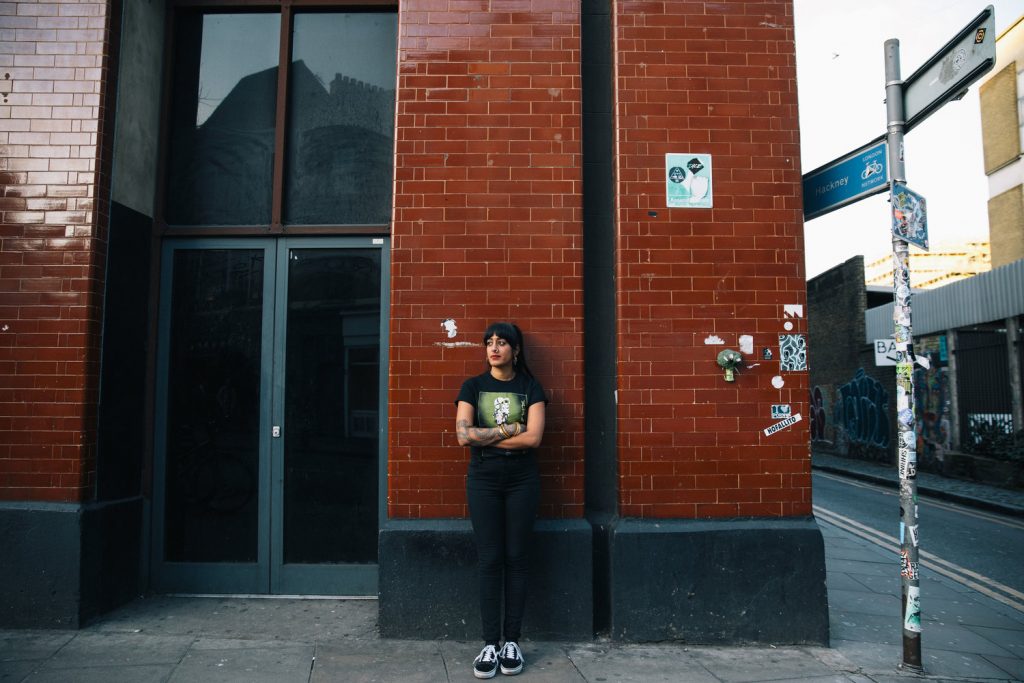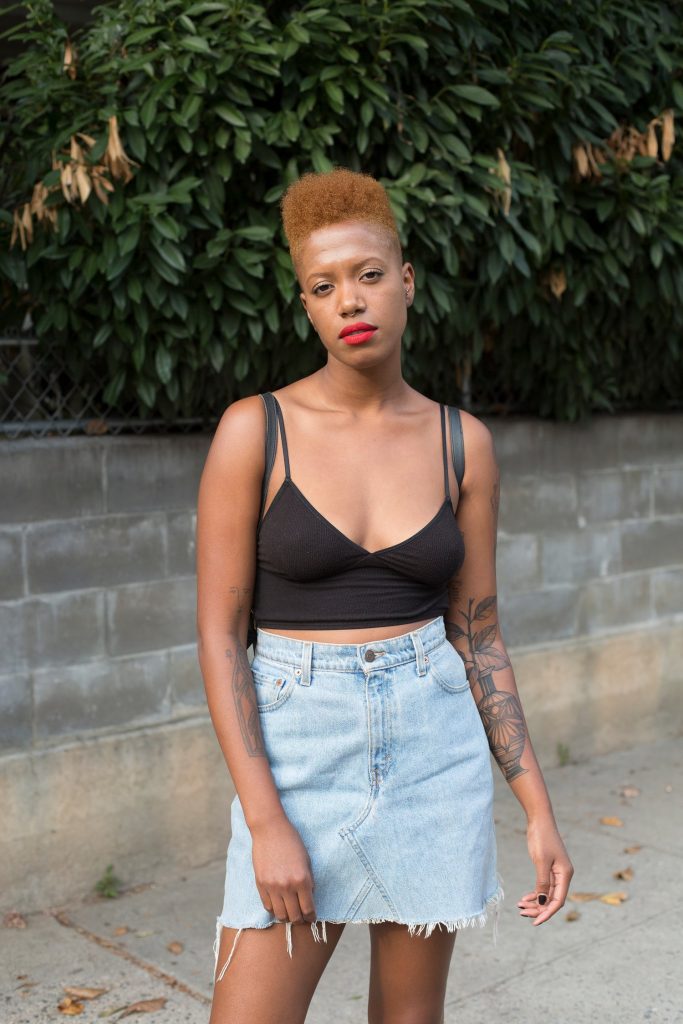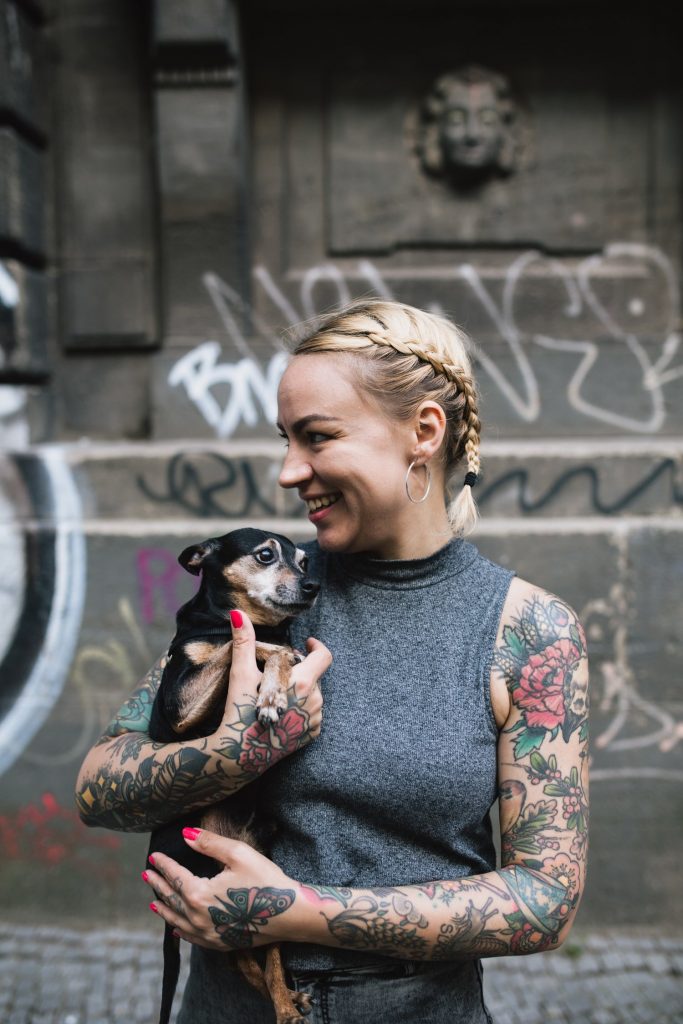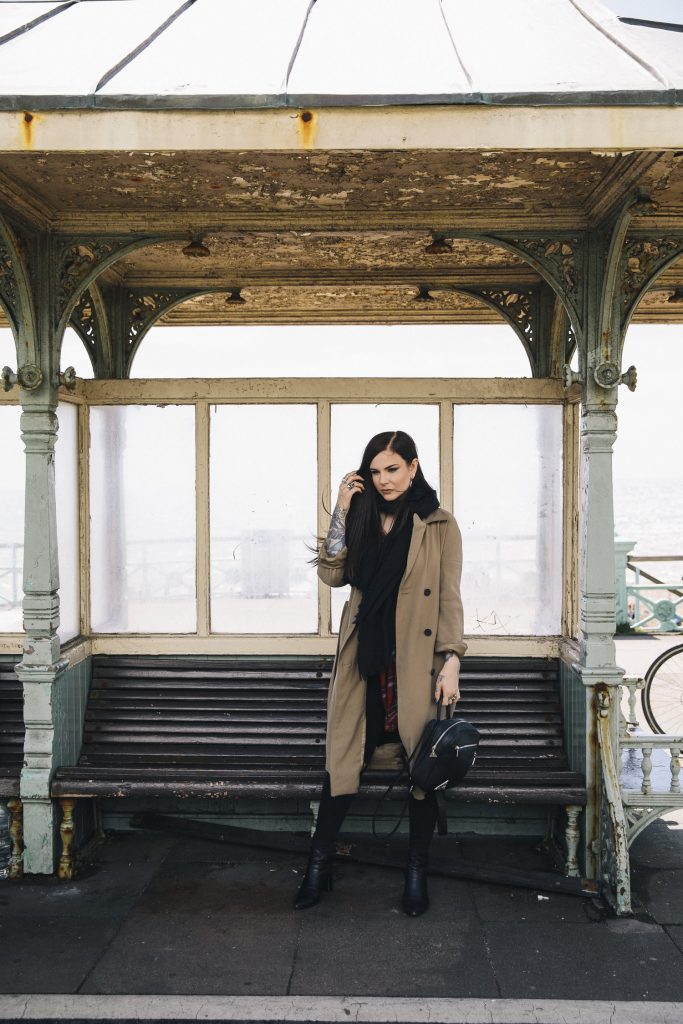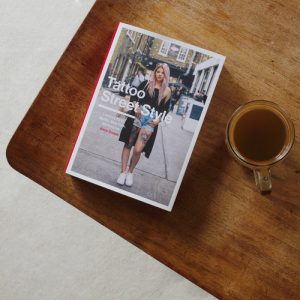Perhaps you’ve fallen out with the artist, maybe they moved away or it was badly executed, but is it ever, really, okay, to get another tattooer to complete someone else’s work?
This feature was written by Alice Snape, and originally published in Total Tattoo, September 2019.
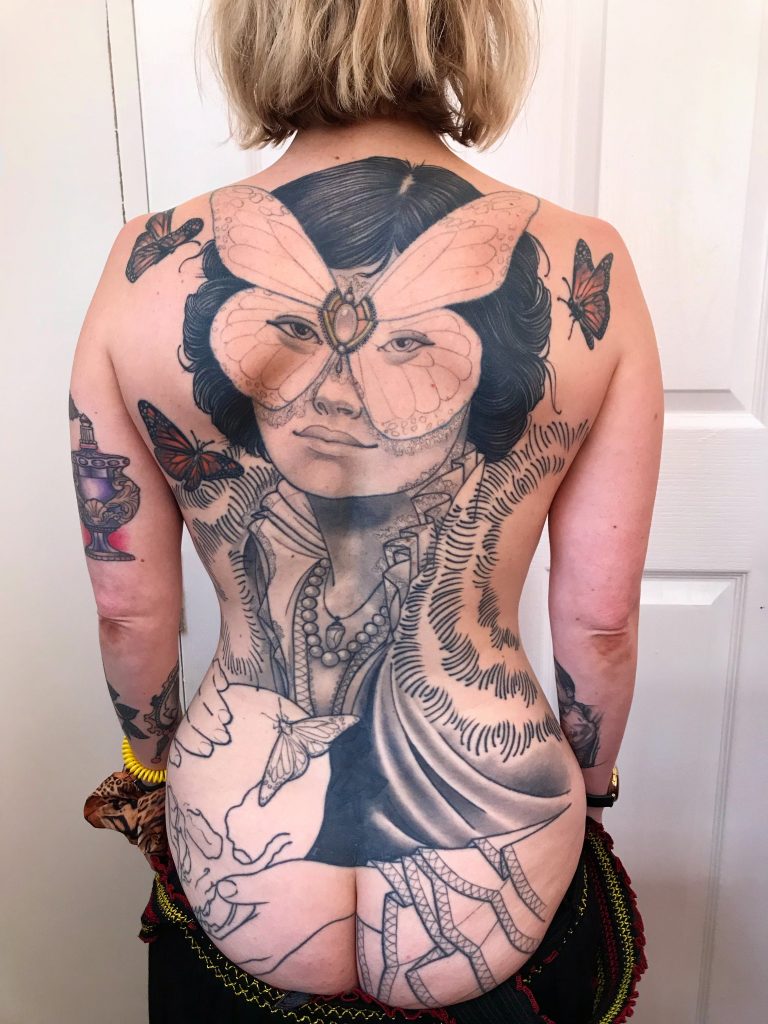
I look at my back in the mirror. I try not to regret the huge tattoo that travels from my neck right down to my bum. That butterfly lady now looks at me, mocking. I wish I could rewind to that time, pre tattoo, when my back was bare. Tell myself to wait. The tattoo reminds me of the tattoo artist I would rather forget. But I can’t forget whose hands my tattoo is by, the hours I spent under his needle, and how I felt bullied into getting it in the first place.
I started getting tattooed when I was 22, later than most, I was always overthinking, worrying about what I wanted, where it should go, and who should do it. Since I started writing about tattoos, apparently I have become an expert on them – I have presented documentaries, I even edited a tattoo magazine – yet I still made a mistake. The advice I gave to others, I didn’t follow myself. The back is that huge piece of canvas that shouldn’t be wasted – or so I tell people. It is prime real estate for a custom piece of art by a tattoo artist that you love, whose work you will forever wear with pride.
However, somehow a quick chat about possible ideas with [the tattoo artist] accelerated at a rapid pace and I was booked in for a backpiece. I travelled all the way to Berlin for my first session. An epic eight hours of linework, travelling back on the plane was agony. And something about the whole experience didn’t feel right. I went with it anyway, ignoring that nagging feeling in my stomach. But then every time he messaged about a follow-up appointment, I felt trapped. I couldn’t bear to spend even an hour being tattooed by him. Knowing what he had said about other girls’ bodies while in my presence, talking about their “saggy tits” while he tattooed my bum. I felt vulnerable and exposed. It made me wonder what he might be saying to other people about my body…
It got to the point where we were no longer speaking, due to a couple of antagonistic emails that made me no longer feel comfortable with the situation. I’d had a total of three sessions with him, and although the linework was mostly done and the shading started, it was nowhere near complete. That huge unfinished tattoo haunted me for years. At times I could forget it was there. But then I’d catch a glimpse while at the gym or naked as I stepped out of the shower. The tattoo I was supposed to love the most was mocking me.
At times I could forget it was there. But then I’d catch a glimpse while at the gym or naked as I stepped out of the shower. The tattoo I was supposed to love the most was mocking me.
So I called on my friend Google. I wanted to know the politics, is it okay to get a tattoo finished by someone else? I typed in: “getting a tattoo finished by another artist” and immediately fell down a Reddit hole, then stumbled across a film, with different tattooists talking about the “tattooist’s moral code”. “For me, it’s disrespectful to the artist,” said tattooist Jess Yen. “Out of respect, I don’t like to finish someone’s work.” And Phil Garcia agrees that you must get permission from the tattoo artist who started it. “A tattoo artist puts their heart and soul into it, and if someone else finishes it, it’s just fucked up.”
So at first, I considered someone else finishing my back with trepidation. I know that tattoo artists have a code, one that can be extremely intimidating for the customer. But a year or so after I first started the journey, a tattoo artist offered to finish it for me and we did a couple of sessions. They fixed her flyaway hair and added some colour to the monarch butterflies, but my heart or my head weren’t in it anymore. But since they did that session, I have been mulling over the issue: who owns the tattoo? And is it really okay for someone else to finish a piece started by the hand of another?
“If you feel uncomfortable with your artist, don’t feel like you need to carry on getting tattooed by them. It’s your tattoo and your body,” my tattoo artist told me reassuringly. “I’ve been there too with my backpiece. Unfortunately, I ended up feeling incredibly uncomfortable getting tattooed by the artist. A few different things happened and I didn’t really want to get it finished by them. It’s a real shame as the tattoo is beautiful – and it’s something I was so excited about at the start – but now I really don’t like talking about it. To the point where I’ve been recently thinking about getting it blasted over. It goes to show that actually your artist plays a huge role in the tattoo, even after it’s finished. It’s made me take extra care in how I treat my customers and also how I can make the experience the best it can be.”
I have sought comfort that others have been there too – started huge tattoos by someone they perhaps wish they hadn’t. Tattoo artist Myra Brodksy started getting tattooed by the same artist that I did, in Berlin in 2015. She had ten sessions with him but stopped getting tattooed for various reasons. “He moved to Birmingham after my tenth session. My back piece was halfway done then. I did not know he was planning on moving and he never told me when we started. Of course, I was not ready to travel to Birmingham to get tattooed. He didn’t even stay there for long. A few months later he moved to California, then to France. It was literally impossible to get the tattoo finished by him. In the beginning, he was very nice to me. But after a couple of sessions he turned into a miserable nervous wreck. While I was getting tattooed I listened to his problems and soon he would take things out on me.” Myra still likes the design and placement of the piece, but is now looking for someone else to finish it for her.
While I was getting tattooed by Dolly at No Friends Tattoo Club in Brighton the other week, she told me she too had to stop a huge back piece after just two sessions. “[The tattooist] started it four years ago,” she told me. “Everything was okay during the first session, but during the second, he climbed on top of me and tried to finger me while he was tattooing me. I yelled at him, gave him no money, left and cried. Now every time I look at it, it makes me angry. I went to him to get his best work, I didn’t get that as he was clearly distracted. I work in the industry, so I am lucky I have tattooer friends who will finish it for me.” She advises anyone in this position to seek out someone else to finish the piece – even if there is only one more session to go. “If I am taking on someone’s work, I always ask why,” continues Dolly. “You can change your perspective on a tattoo if you work with a new tattooist to help you reclaim it. It’s like going back to a city that holds bad memories. If someone came to me with an unfinished tattoo that holds bad feelings, I’d go the extra mile to try to change that for them. It should never feel like it’s your privilege to get tattooed by someone.”
What Dolly said really got me thinking. As customers, we’re often made to feel that the tattoo artist’s vision is sacred, that it would be sacrilege to get someone else to take over. But where does our own bodily autonomy count in that? After all, it is a tattoo on a body – your body. A tattoo that is paid for by you. “At first, I was apprehensive [about working on tattoos by other people] because I had a really traditional apprenticeship and was taught that you should never touch someone else’s work,” Guen Douglas, of Taiko Gallery in Berlin, told me when I asked her about this dilemma. “But the more I thought about body autonomy, I realised that no one owns the tattoo on the body of the client but the client. If you buy a beautiful expensive handmade vase and decide to doodle all over it, take chips out of it or just smash it, the ceramicist is allowed to be sad that you ruined his or her artwork. But ultimately it has been paid for and the object belongs to you. Do what you will with it – but that doesn’t mean that you can replicate it and sell it again.”
“With the rise of the black out bodysuit, I remember the first time I saw a client had blacked out a small piece of mine,” Guen continues. “I was really hurt at first, then I realised I have my photo, I was paid for my work. Surely I wouldn’t prevent a client from evolving and transforming in a way that makes them happy.”
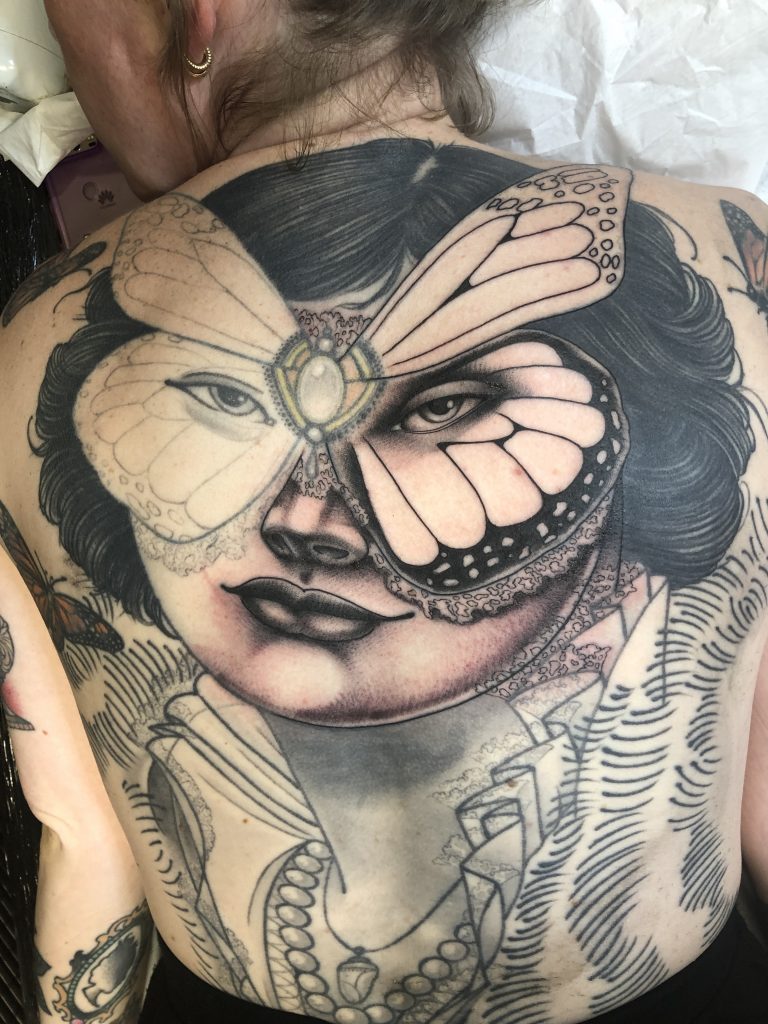
And now, I finally feel ready to embark on my journey again – galvanised by words of tattoo artists I admire and respect. I want to turn my backpiece around. I want to own it all over again. Fall back in love with it. Believe it when people tell me how beautiful it is; work with someone I trust implicitly. So I met tattoo artist Tracy D – who works at Modern Classic in west London – to chat about it. She has tattooed me three times already. She’s gentle and understanding and I adore her style.
“I try not to get involved in politics, there are always two sides to a story and at the end of the day, it’s unfortunate that there is an unfinished piece,” Tracy told me when I asked her what she thought about finishing someone else’s work. “I know it’s hard for me to look at an unfinished piece on my own body between sessions, I can’t imagine how it would be to have no finish point in sight.” And so, she agreed to take the reins, bring my butterfly lady back to life. We are one session down, and she has worked magic already. The face has been reworked. And over the coming months, we will add more butterflies and some colour.
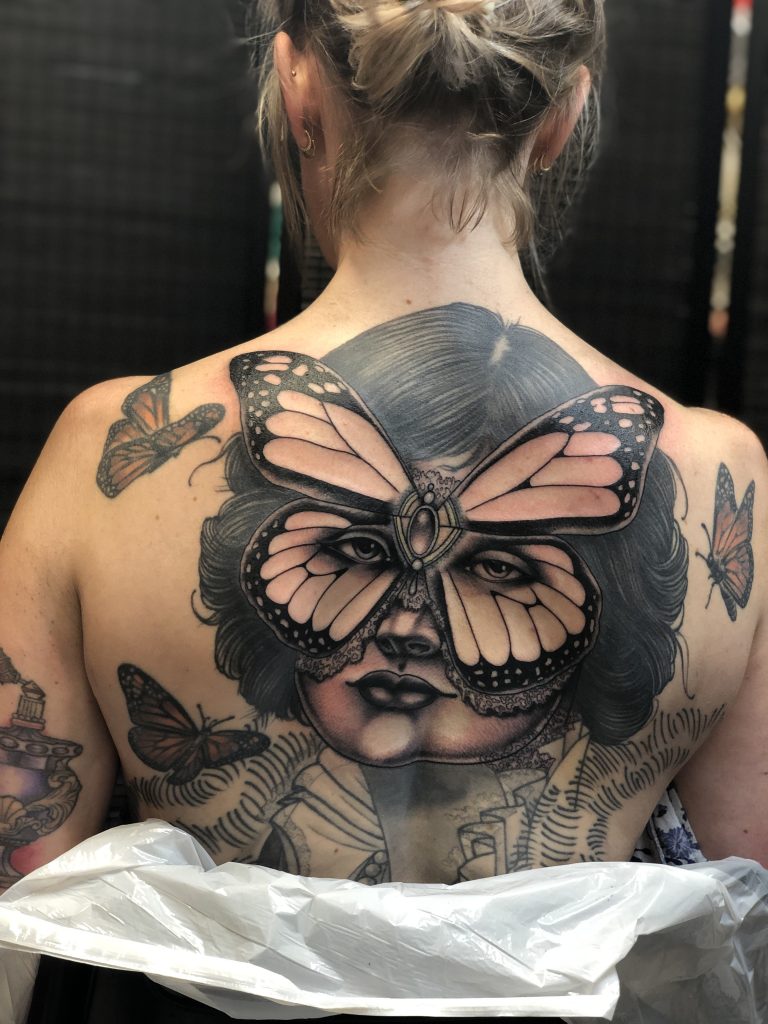
I am now excited again. I am motivated to get it finished, to work with Tracy on our shared vision. Please follow my progress on Instagram @alicecsnape. I was overjoyed to see your comments after my first session, and so many people messaged to say they have been in a similar situation and didn’t know what to do. If that’s you, know that you’re not alone. Get the tattoo you want, by the person you want to do it. Reclaim something that has bad memories. Never, ever, feel like you must continue with an artist you’re not happy with. You are the customer, and the customer – as some say – is always right. Especially when it involves YOUR body.
END NOTE: I contacted the artist who started my back and told him I was writing this piece. He has no hard feelings and wishes me the best with my journey.
In response to tattooing’s growing #metoo movement, we have set up a private group on Facebook to share stories and find support, you must request and be approved to facebook.com/groups/tattoometoo
